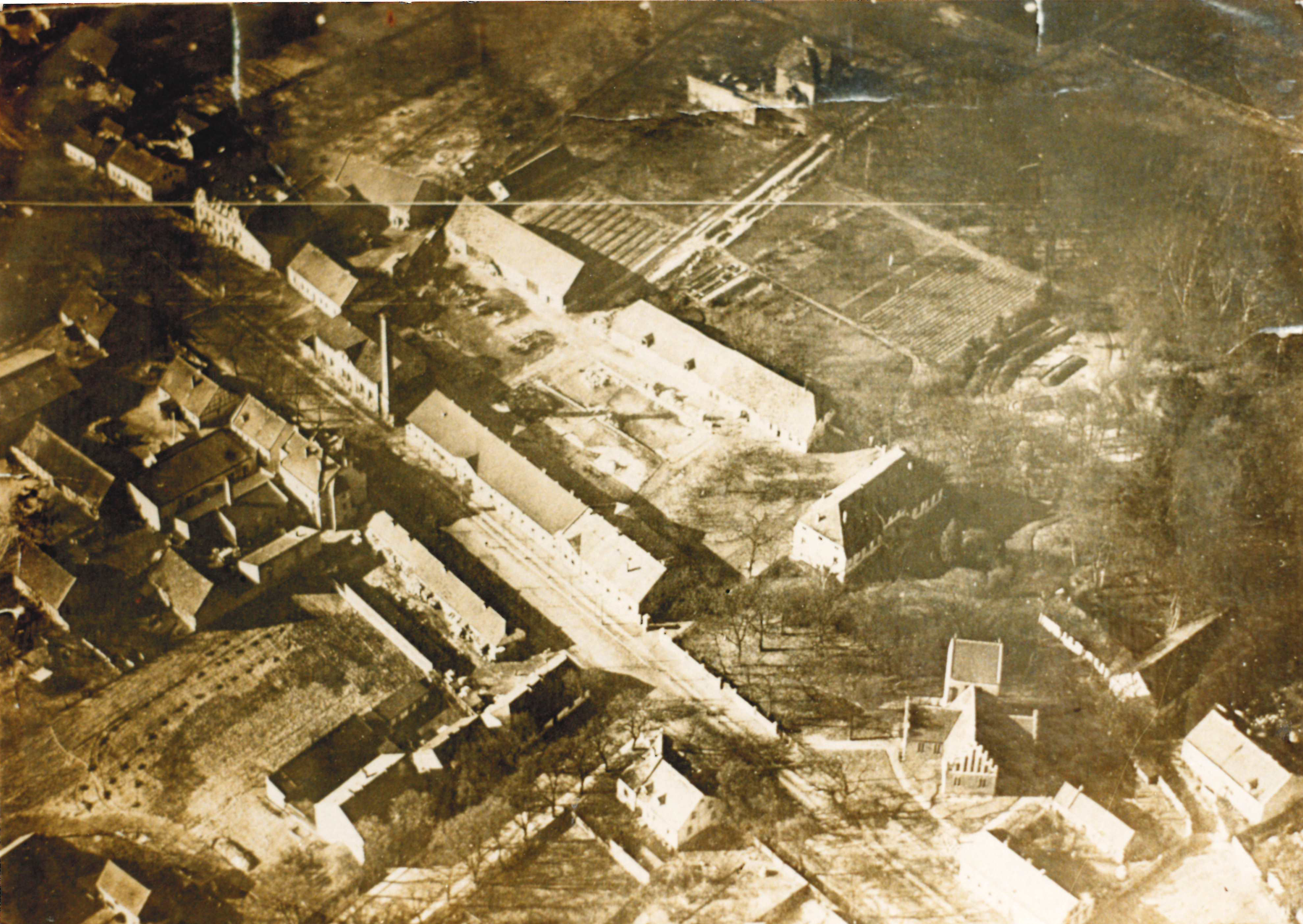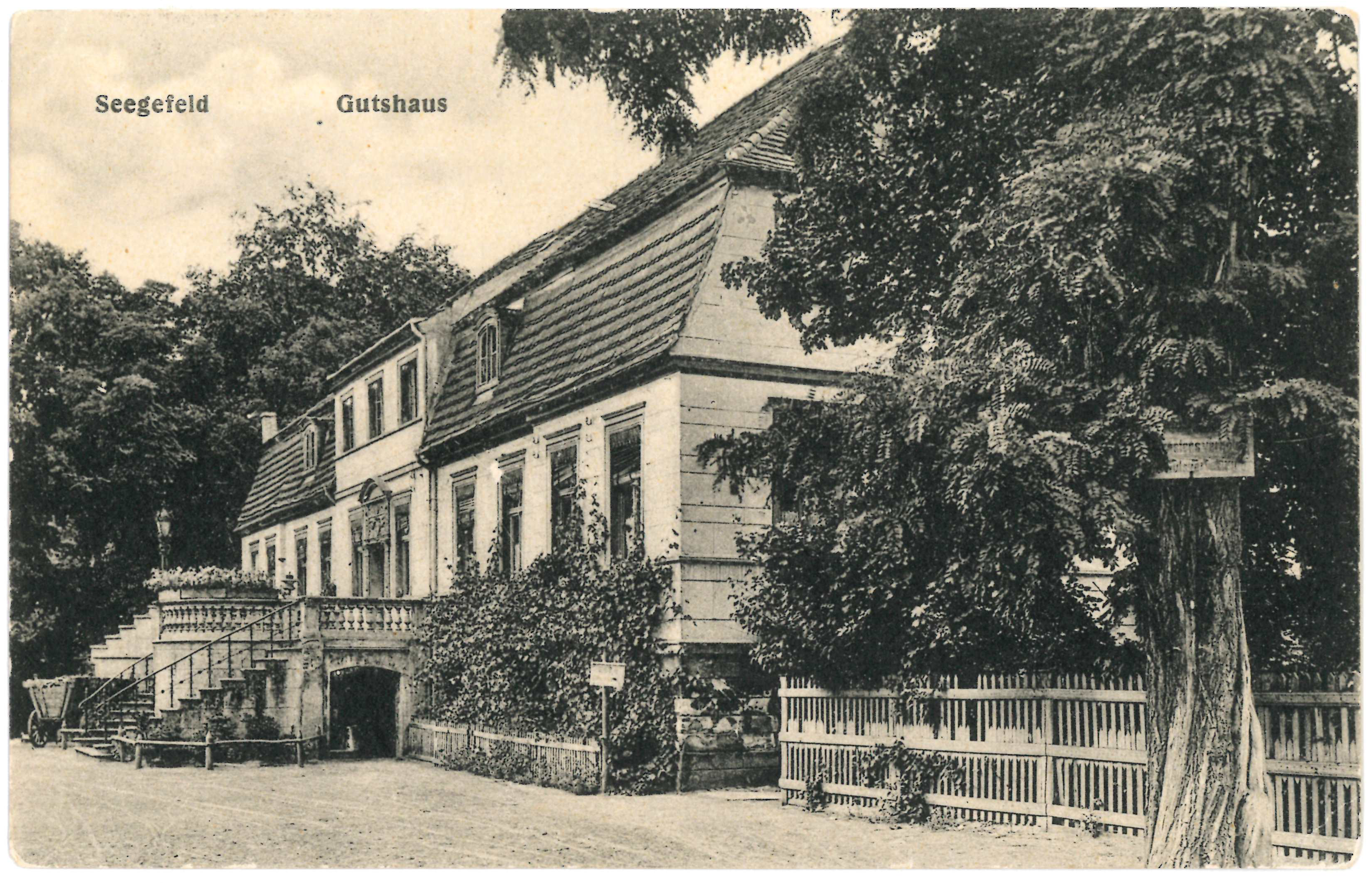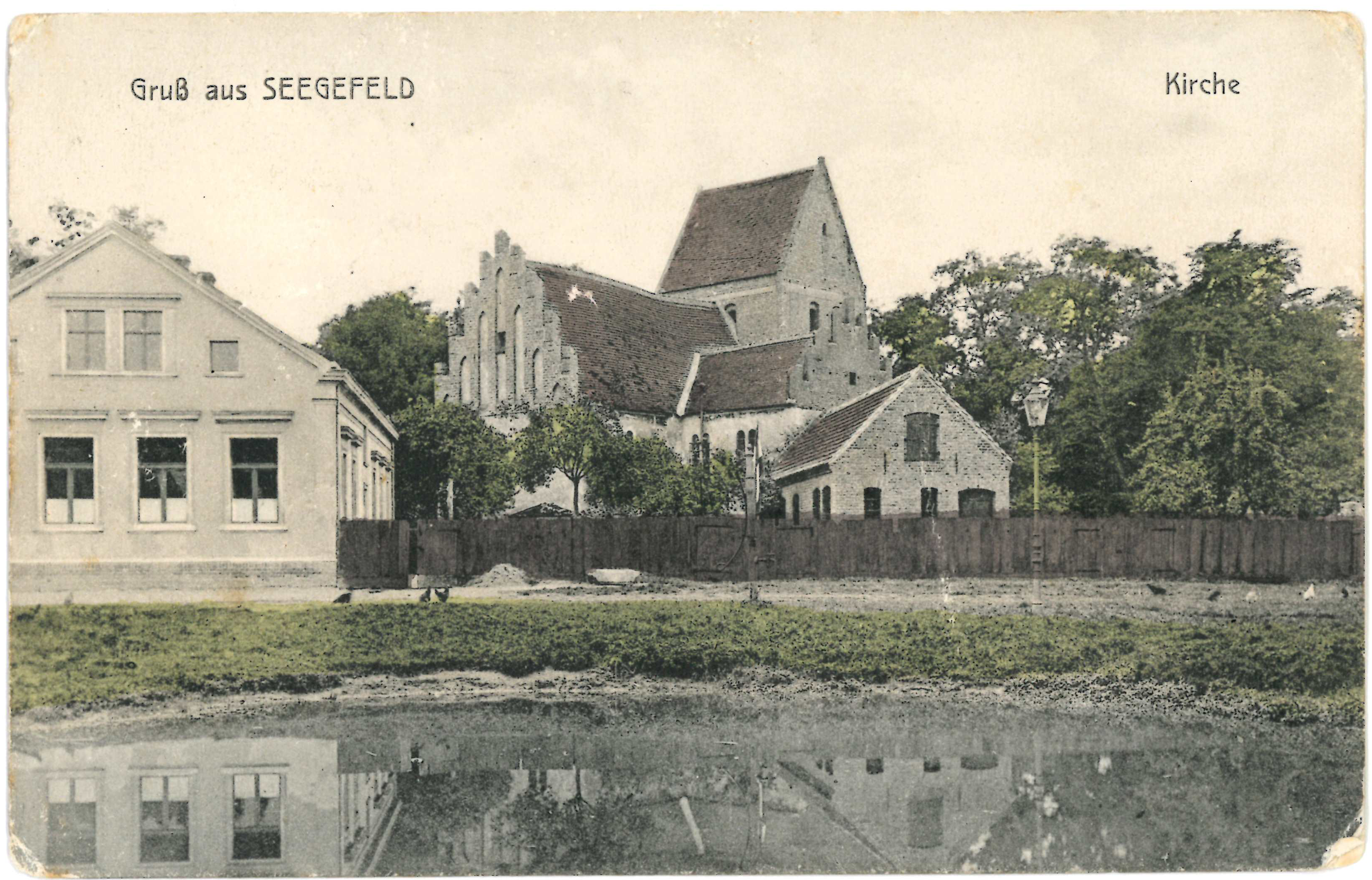Der historische Ort Seegefeld
(1)
Location of the villages Falkenhagen and Seegefeld Rep. Messtischblatt "Section Rohrbeck"
(detail), 1868 Archive Museum Falkensee
In a deed of donation to the monastery Spandau
from the year 1265 the place Seegefeld was first mentioned. The Seegefelder
church still dominates the historical part of the former Angerdorf.
The Protestant church Seegefeld
1313 was the first documentary mention of the pastor
"Thomas" to Seegefeld. Until 1742, the church, consisting of tower and nave, was
supplemented by two additions. The building received in this way its cruciform
structure and is a special feature among the churches in Havelland. In the
years 1572-1818, the Ribbeck family exercised the ecclesiastical patronage law
and Lehn over the manor in Seegefeld. In 1662, Hans Georg II von Ribbeck donated the interior
of the church from altar, pulpit and revised baptism from 1585. Since the 18th
century, the epitaphs of the children of the Ribbeck family, who died in
Seegefeld, complete the interior of the church. In front of the Protestant church, on the street side,
there is a monument made of red natural stone for soldiers from Seegefeld, who
fell in the First World War (1914-1918).
The manor in Seegefeld
In the immediate vicinity of the church was the 1690 by
Hans Georg III. Mansion built by Ribbeck. It was only in 1818 that the estate
of the Ribbeck family ended. Until 1852 the family lived v.d. Stretching in the
manor house, which operated the laying of the cemetery. After that, the owners
changed frequently. The last manor owner, Bernhard Ehlers (1848 - 1919),
acquired in 1888 the manor with the mansion in the center of the village and
the associated meadow, forest and pasture land and began with the parcelling.
The colonies of Neufinkenkrug, Neuseegefeld and Waldheim were created on the
once undeveloped areas. After the death of Bernhard Ehlers the manor house
Seegefeld changed hands several times. Ultimately, 1959/1960 was a political
decision to demolish the 350-year-old mansion, which was in dire need of
renovation.
The village Seegefeld
Characterized by the manor and its grounds, Hüfner and
Kossäten lived in Seegefeld in single-storey half-timbered houses. Along the
present Bahnhofstrasse were until the mid-20th Century still some of these
simple, usually with a black kitchen provided and thatched residential
buildings. Even before the abolition of serfdom in Prussia (1794), Hans Georg V
had granted the inhabitants of Seegefeld the free property in their farms and
managed the manors with the help of day laborers. Until 1923 the village Seegefeld existed. In the same
year, the community Falkensee was born. Seegefeld was next to Falkenhagen one
of the two villages that were joined together to form the new municipality
Falkensee. Even today clearly recognizable in the root word: from FALKENhagen
and SEEgefeld was on 1 April 1923, the large community FALKENSEE. It was not until 1927 that the areas of the former manor
of Seegefeld were incorporated into Falkensee. Only in 1927 was the incorporation of the land of the
former manor Seegefeld to Falkensee.
Seegefeld, with manor and church in the center aerial
photo, 1920s Archive Museum Falkensee Gutshaus Seegefeld Postcard around 1920 Archive Museum Falkensee

Church in Seegefeld, Postcard, around 1910 Archive Museum Falkensee







